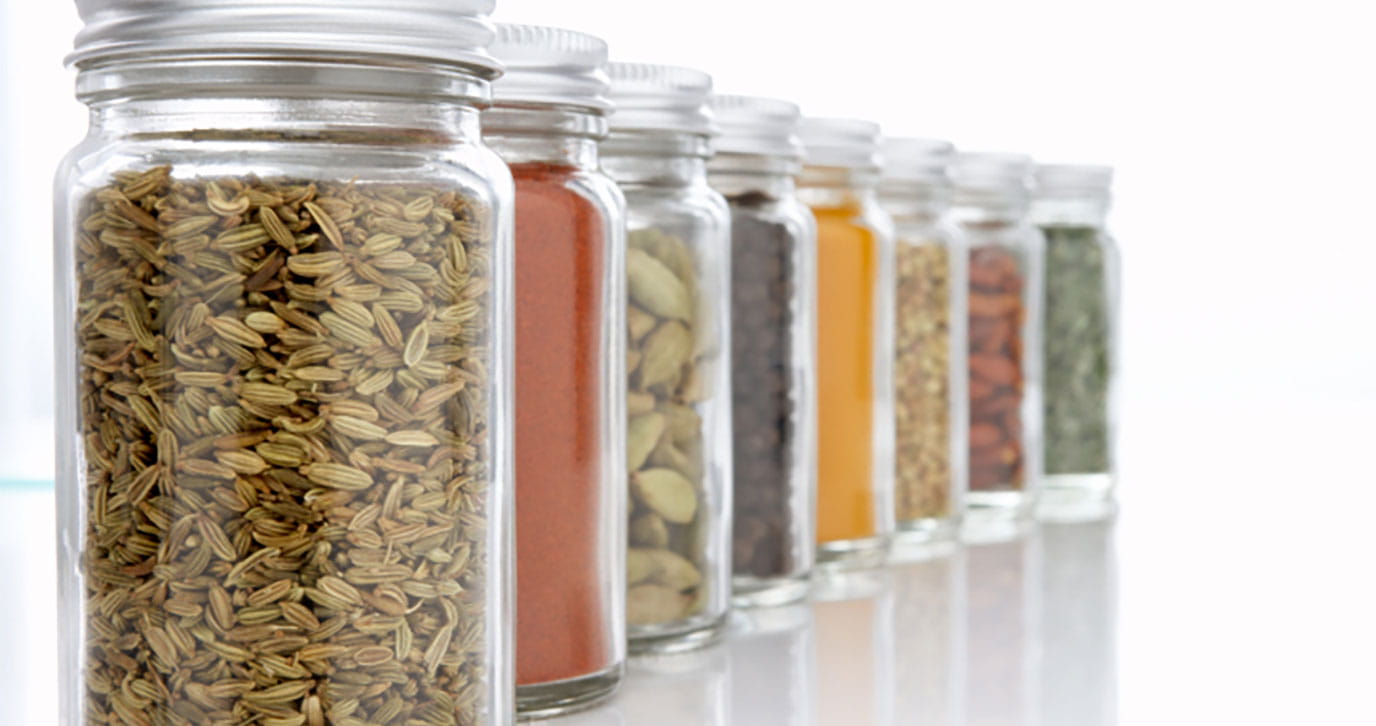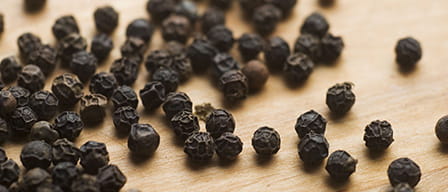
Anise


Mustard is the name given to three related species in the Brassica family. Three commercial mustard species are commonly cultivated today. They are Sinipis alba L. (yellow or white mustard), Brassica nigra (black or true mustard), and Brassica juncea (brown, Indian or Chinese mustard). White mustard also may be referred to by the scientific names Brassica alba L. and Brassica hirta Moench. The word mustard is derived from “mustum ardens”, a Latin term that referred to a combination of ground mustard seeds with must (the juice of unripe grapes) and translates to “burning must”. The mustard family includes radishes, turnips and cress as well as weedy species such as wild mustard. Common names for white mustard include mostaza blanca (Spanish), moutarde blanche or moutarde jaune (French), senapa bianca (Italian), sufed rai (Hindi), and weisser senf (German). Brown mustard is also known as moutarde de Chine (French), indischer senf (German), senape Indiana (Italian), and mostaza India (Spanish). Black mustard is referred to as rai (Hindi), mostaza negra (Spanish), senape nera (Italian), zwarte mosterd (Dutch), biji sawi hitam (Indonesian) and moutarde noir (French).
Black mustard plants are tall (6 ft) and sparsely branched, and they produce many short pods, which, as they mature, shed the highly pungent seeds. Plants of brown mustard, when compared to black mustard, are shorter (3-6 ft) and have many upright, branches loaded with longer pods that retain their seeds when ripe. Plants of white mustard are shorter (1.5 ft) than either brown or black mustard, have deeply lobed leaves and bright yellow flowers. White mustard seeds are light yellow in color, about 0.1 in in diameter and have a mucilaginous coating which turns white when dry. Brown mustard seeds are about the same size but are a darker yellow or brownish color. Both white and brown mustard seeds are nearly globular in shape. Black mustard is the smallest of mustard seeds, is dark brown or black in color and oblong in shape. White and black mustard plants are probably native to the Mediterranean region and may be considered as weeds outside their native growing regions. The major market for white mustard is the North American condiment industry. Europe is the major market for use of brown mustard as a condiment, particularly in the form of specialty mustards such as Dijon. Asia is the major market for a type of brown mustard called oriental mustard that is suitable as a spicy cooking oil and as a condiment. Nepal, Russia and Canada are currently the largest global producers of mustard. In the main mustard-producing countries, the production of mustard plants is fully mechanized. However, due to mechanization brown mustard plants are largely replacing the black variety because black mustard is only suitable for hand harvesting. Thus, brown mustard cultivation is less labor-intensive and allows for more cost-effective production.


Mustard is among the oldest recorded spices as documented in Sanskrit records dating back to about 3000 BCE and was one of the first domesticated crops. There are references to mustard in a story of the Buddha in India in the fifth century BCE. This seed also is mentioned in the Quran and according to Muslim tradition, Muhammad stated that he who has in his heart the weight of a mustard seed of pride would not enter Paradise. Jewish texts compare the knowable universe to the size of a mustard seed in order to emphasize the world's insignificance and to teach humility. In the Bible’s New Testament, Jesus likens the Kingdom of God to a grain of mustard seed that grows to become a large plant. The spice was a common item in the earliest Egyptian dynasties and was spread by spice traders and military exploits throughout Europe and Asia. The Spaniards introduced mustard to the Americas, and in California there was a legend that a priest, Father Junipero Serra, would scatter black mustard seeds to mark the routes from monastery to monastery.
The Greeks and the Romans used mustard as a medicine as well, considering it as a cure for such contrasting maladies as hysteria to snakebite to bubonic plague. Ancient texts from India, mainly the Ayurveda, contain prescriptions written 5000 years ago providing mustard (raajikaa) seed preparations for internal diseases such as for enlargement of the liver and the spleen, as a laxative and to purge toxins out of the body. The seeds were applied externally, mainly for relieving inflammation, skin diseases, mucus flow, and arthritic problems and for stimulating hair growth over the scalp. Traditional Chinese folk remedies for centuries used mustard for the treatment of cough and asthma, chest pain, nausea and vomiting, numbness, and bruised tissues. In Korea, seeds were used as a remedy for abscesses, colds, rheumatism and stomach disorders. Mustards were used in Turkish traditional medicine to counteract sharp, burning nerve pain. The Romans are believed to have brought mustard to France and by the 12th century it had spread to Germany and England. Folklore in Germany purports that a woman who sews mustard seeds into her wedding gown will become the “authority” in the family. In Denmark evil spirits were kept from homes by scattering mustard seeds throughout the premises.
When young, the nutmeg kernel is oval, pale brown, and soft, but it quickly shrivels when dried and becomes grayish brown with a furrowed surface.

When dry or ground into a flour, mustard seeds are odorless. However, when the seed is chewed or when the seeds are mixed with water the distinctive mustard taste emerges. Mixing ground mustard seeds with water causes a chemical reaction between the enzyme myrosinase and glucosinolate compounds such as sinigrin and sinalbin. This enzyme transforms the glucosinolates into various isothiocyanate compounds. The different concentrations of glucosinolates in mustard plant varieties can result, when mixed with liquid, in different isothiocyanate products thus creating diverse flavors and intensities. However, the liquid in which the seeds are mixed will determine the pungency of the heat. Compared to cold water, vinegar lessens the heat produced and creates a milder outcome. The smaller and darker the seed, the hotter and more intense the flavor. White (or yellow) mustard seeds are not so pungent and have the mildest taste of the three. Brown mustard seeds have an acrid pungency that is longer lasting. Black mustard seeds produce a very intense pungency that is sensed initially from the back of the mouth and then proceeds to become a sharp sensation in the sinuses. This sensation is similar to that produced by two other spices from the same family, wasabi and horseradish.
Since antiquity mustard has been a chosen condiment. The ancient Roman cookbook by the merchant Marcus Apicius had recipes for many mustard dishes and even for making a mustard sauce for preparing fish and boiled game. Not only seeds but also the leaves, stems and oil of the plants are edible. Sprouts from the mustard seeds are used in salads in many Asian recipes. In South Asia the leaves are stir-fried and eaten as vegetables. In South Asia mustard oil or shorishar tel is a common cooking medium and mustard seeds are also ingredients in spicy fish dishes such as jhaal and paturi. The Japanese use the oriental brown variety as a dip for raw fish. The brown mustard plant is also grown as a source of vegetable oil in such regions as northern India, Pakistan, China, and southern Russia. Nowadays the mustards commonly used in foods often comprise a mixture of seeds from two or more species, along with salt, other spices, starch or flour and different liquids creating sauces and pastes with diverse flavor and pungency. These mustard seeds and condiments are widely used to flavor various foods, particularly cold meats, sausages, and salad dressings and also to enliven mayonnaise, sauces, and pickles. Most commercial mustards use white and brown seeds with black seeds less frequently selected, especially in the US and Europe. French type mustards use the pungent brown (sometimes along with black) variety. The classic French sauce Robert is a brown mustard sauce made with onions, mustard and white wine and then simmered to a demi-glace. Both white and brown seeds are used in American-type mustards to create milder products (American yellow, ballpark mustard) or spicier deli brown mustards. In Germany the two most popular styles are both made primarily with brown seeds, an example of which is a medium-hot blend called mittelscharf. Colman’s original English mustard is made from white and brown seeds. On the other hand, black mustard seeds are most commonly used in Indian cooking in which they are often fried in ghee or oil that produces a more sweet and mild taste along with a nutty aroma. These are then added to sauces, chutneys, pickles, curries, sambar stew and the vegetarian side dish dal.
Our understanding of how mustard and other spices and herbs potentially benefit health is growing. Using diverse spices and herbs as seasonings has been shown to unlock new flavors and tastes that enhance our enjoyment of numerous foods and vegetables, while reducing our intake of added saturated fats, sugar and sodium. Explore ways to incorporate various spices and herbs to create healthy meals and expand your culinary experiences. Learn about recommendations for building a balanced and healthy diet.

Anise

Basil

Bay Leaf

Black Pepper

Black Seed

Cardamom
